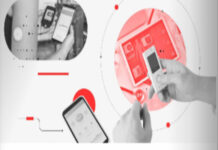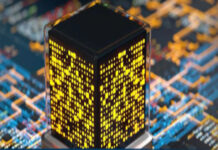Automation solutions guarantee improved process safety and security for employees, machines, and even data traveling through software. This is a result of their strong data security features, predictive maintenance components, and key event monitoring features. Many typical workflow bottlenecks have found a viable solution in automation. In cybersecurity, where there is a severe lack of talent and inefficiency becomes hazardous, it is especially beneficial. The implementation of cybersecurity automation has been comparatively gradual, despite its potential. Automation in cybersecurity is at the forefront of technological development, giving companies the means to effectively protect against online attacks. You may identify and address security incidents faster by automating complicated and repetitive procedures. Companies who wish to successfully automate security procedures need to fix typical issues regarding security in automation.
Automation in Cybersecurity
Automation in cybersecurity is the process of using technology to carry out security-related tasks with little assistance from humans. This involves identifying, evaluating, and reacting to dangers faster and more effectively than would be feasible with human experts. Automation allows businesses to manage a large number of malicious activities and warnings, freeing up cybersecurity experts to work on more complicated problems.
Cybersecurity Safeguards
From a cybersecurity standpoint, one of the main concerns with automation is the intersection of the two problems. Indeed, automation can be a very effective instrument for maintaining the security of your organization, but if you rely too much on it, it may become a serious issue for the firm. Any cybersecurity that combines human experience with software talents will always be the best. Overemphasizing automated procedures in your cybersecurity safeguards may lead you to believe that you are completely safe when, in fact, you are still at risk.
Humans in Cybersecurity
Not having humans from the security process and from a creative equation may lead to issues with efficiency and security. The issue of humans in cybersecurity was discussed above. Since human mistake frequently contributes to cyber breaches, it is reasonable to believe that removing people from the process completely will increase the likelihood of having strong security measures that are challenging to compromise.
It goes without saying that this is only half the tale. Although humans are more suited for particular professions, they nonetheless serve a crucial and critical role in cybersecurity. In fact, humans are the only ones who can perform some tasks, including conducting research on new types of threats and creative thinking.
Industrial Automation Control Systems
Industrial automation control systems face a number of particular difficulties. This involves the requirement to integrate platforms and systems created by many manufacturers in order to automate industrial control systems. Both proprietary and non-proprietary versions of these platforms and systems are possible; the latter pose unique security issues. A device running Windows serves as an illustration.
Integrating Cybersecurity Automation
It can be quite difficult to integrate cybersecurity automation into current systems. Because every company’s IT architecture is different, automation strategies must be customized. It requires careful planning and a thorough understanding of the existing configuration; it’s not a plug-and-play affair.
Technical know-how is essential since you need to choose the appropriate automation solutions and make sure they integrate well with the various components of the business’s IT environment. Knowing this helps you avoid generating more issues than you solve, which is why having the understanding of knowledgeable IT professionals is essential.
Compliance Guidelines of Industrial Automation
Compliance is a major problem, particularly when combining tools from various providers. Unfortunately, there are no compliance guidelines for industrial automation and industrial software in general, which frequently results in serious security threats.
Furthermore, guaranteeing that an IIoT system is always 100% safe is a major difficulty when it is implemented into a contemporary supply chain. Assigning accountability is another issue, especially when you take into account that the majority of businesses have several stakeholders.
In the end, each provider of industrial automation software has its own design philosophies, and many of them do not adhere to the most recent security guidelines. For this reason, you should always make sure that the solution you’re looking for complies with security standards.
Strong Security Measures To Create New Market Value
The market for security automation was valued at USD 9.22 billion in 2023 and is expected to expand at a compound annual growth rate (CAGR) of 14.0% between 2024 and 2030. The rising complexity and frequency of cyberattacks are the main causes of this rise, which forces businesses to implement cutting-edge security automation solutions in order to safeguard confidential data. The efficiency of these technologies is being improved by technological developments in AI, ML, and big data analytics.
Strong security measures are also becoming more and more necessary due to strict regulatory compliance requirements, the increased use of cloud and IoT services, and other factors. In order to effectively manage security operations, enterprises are increasingly turning to automation due to the lack of qualified cybersecurity personnel. By automating repetitive operations and simplifying procedures, security automation also reduces costs and improves operational efficiency, while more investment in IT infrastructure supports the integration of these advanced tools.
Quantum-Based Attacks in the Computing World
Significant commercial potential are being created by developments in quantum computing, particularly in the area of thwarting quantum-based attacks. Since quantum computers have the ability to crack conventional encryption techniques, it is imperative to design algorithms that are resistant to quantum computing. These novel algorithms can be integrated into security automation solutions, guaranteeing data protection in the quantum era. Updates to cryptography are automated, and weaknesses caused by antiquated encryption techniques are further reduced. Real-time response and threat detection are made possible by quantum computing, which improves security analytics. Additionally, companies can proactively resolve vulnerabilities by simulating quantum-based assaults. While cooperative efforts create new standards, increased investment in research and development for quantum-safe systems fosters innovation in security automation.
Integration of AI and ML
Rapid technical breakthroughs including the integration of AI and ML, the rise of new cyberthreats, innovations in quantum computing, and rising regulatory compliances have put the market in a high growth stage. The segment’s growth is further fueled by integration with blockchain, cloud computing, and IoT, which are linked to large investments in R&D. Strategic acquisitions aimed at broadening product portfolios, improving technological capabilities, and breaking into new markets are driving the mild M&A activity currently occurring in the security automation business.
IIoT-Driven IA Cyberthreat Landscape
There are two main categories of attackers that take advantage of the aforementioned IT/IoT/OT security flaws in the current IIoT-driven IA cyberthreat landscape: opportunistic attackers, like the numerous ransomware groups that target OT targets, and highly skilled threat groups, like nation-state-driven ICS/OT threat actors that target advanced persistent threats (APTs) in industrial infrastructure. These cyberattacks cause a disruption in corporate operations that can last anywhere from a few days to several weeks, and the multi-party cyber-risk impact can cost businesses hundreds of millions of dollars.
Conclusion
Even after COVID, remote connectivity in workplaces has greatly risen due to the digitization of OT systems and COVID-working rules. Work-from-home (WFH) has been shown to have advantages, but it also carries a number of serious cyber threats. This necessitates making sure that every employee in an IA enterprise has secure remote access. Deploying multi-factor authentication (MFA) and implementing zero-trust solutions can significantly lessen the avenues for adversary attacks.

















